 | Charles Davies - Algebra - 1845 - 382 pages
...has already been shown (Art. 46), that, (o + 6)2 = a2 + 2ab + 62 ; that is, The square of a binomial is equal to the square of the first term plus twice...of the first term by the second, plus the square of tJie second. • The square of a polynomial, is the product arising from multiplying the polynomial... | |
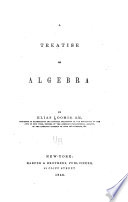 | Elias Loomis - Algebra - 1846 - 380 pages
...the square root. But we know that the square of a binomial x + a, or Jt2 + 2ax + a", is composed of the square of the first term, plus twice the product...term by the second, plus the square of the second term. Hence, considering x2 + px as the first two terms of the square of a binomial, and consequently... | |
 | Elias Loomis - Algebra - 1846 - 376 pages
...of a binomial, we can reduce the equation to one of the first degree by extracting the square root. the product of the first term by the second, plus the square of the second term. Hence, considering a? + px as the first two terms of the square of a binomial, and consequently... | |
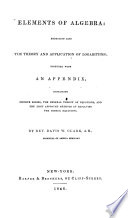 | Davis Wasgatt Clark - Algebra - 1846 - 374 pages
...Thus, vV+2px +p 2 —x+p, and Vx'—Zpx+p'=x—p. 324. We have also seen that the square of a binomial is equal to the square of the first term, plus twice the product of the two terms, plus the square of the last term. Thus, Hence, if p2 be added to both members of each of... | |
 | Algebra - 1847 - 408 pages
...has already been shown (Art. 46), that, (a + b)2 = a2 + 2ab + b2 ; that is, The square of a binomial is equal to the square of the first term plus twice...term by the second, plus the square of the second. The square of a polynomial, is the product arising from multiplying the polynomial by itself once :... | |
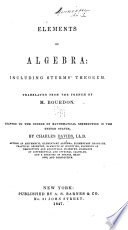 | Algebra - 1847 - 386 pages
...that, (a + J)2 = a2 + 2a¿ + b2 ; that is, The square of a binomial is equal to the square of the frst term plus twice the product of the first term by the second, pías the square of the second. The square of a polynomial, is the product arising from multiplying... | |
 | Roswell Park - Best books - 1847 - 626 pages
...x + a, we shall have (x + a)" = x2 + 2 ax -f- a" ; that is, the square of a binomial, is made up of the square of the first term, plus twice the product of the two terms, plus the square of the last term. This suggests the rule for extracting the square root... | |
 | Joseph Ray - Algebra - 1848 - 250 pages
...the first member of this equation may always be made a perfect square. Since the square of a binomial is equal to the square of the first term, plus twice...term by the second, plus the square of the second ; if we consider x2+2px as the first two terms of the square of a binomial, x2 is the square of the... | |
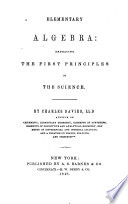 | Charles Davies - Algebra - 1848 - 300 pages
...third forms, we sec that the first member in each contains two terms of the square of a binomial, viz : the square of the first term plus twice the product of the 2nd term by the first. If, then, we take half the coefficient ef x, viz : p, and square it, and add... | |
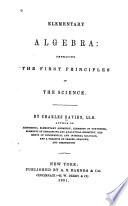 | Charles Davies - Algebra - 1851 - 300 pages
...lav by which these squares are formed can be enunciated thus : The square of any polynomial contains the square of the first term, plus twice the product...second, plus the square of the second ; plus twice the frst two terms multiplied by tht third, plus the square of the third ; plus twice the first three terms... | |
| |